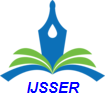Title:
DETERMINANTS OF CERVICAL CANCER SCREENING PRACTICE
AMONG WOMEN OF REPRODUCTIVE AGE IN NYARIBARI CHACHE
SUB-COUNTY |
Authors:
Godner Bwari Peter, Rose Olayo,
George Ayodo |
Volume - 2 Issue - 4, Pages - 2850-2863
|
Abstract:
Cervical cancer is the second most common cancer after breast cancer among women worldwide
and about 80% of the cases occur in the developing countries. However, the screening is too low
in this countries and the determinants of the uptake of screening are poorly understood.
Therefore, this cross-sectional study survey research design was used to identify the
determinants of cervical cancer screening among 287 women of reproductive age (287) in
Nyaribari-Chache Sub County. Data was collected using interviewer administered open and
crossed ended questionnaires. Women from the three wards were proportionately sampled and
the data obtained was analysed using both descriptive and inferential statistics. The study
revealed that social demographic factor, in particular lack of spouse support influence the uptake
of the screening (P<0.04). Both no screening and future plan for screening were associated with
knowledge and P values were 0.012 and 0.001 respectively. However, none of the attitude
factors was associated with the uptake of screening in the study (P value>0.05). The study
concluded that there is need to promote women's knowledge level on cervical cancer and its
screening to increase uptake. The spouse support in particular men should be encouraged to
participate in reproductive health. The study recommended the ministry of health and sanitation
to strengthen and promote education programs to increase the uptake and policy should consider
men as part of reproductive health program.
|
Cite this Article: [Peter, Godner Bwari, Rose Olayo, and George Ayodo. "DETERMINANTS OF CERVICAL CANCER SCREENING PRACTICE AMONG WOMEN OF REPRODUCTIVE AGE IN NYARIBARI CHACHE SUB-COUNTY." International Journal of Social Science & Economic Research 2.4 (2017): 2850-863.] |
Download Full Text |
 International Journal of Social Science & Economic Research
International Journal of Social Science & Economic Research

